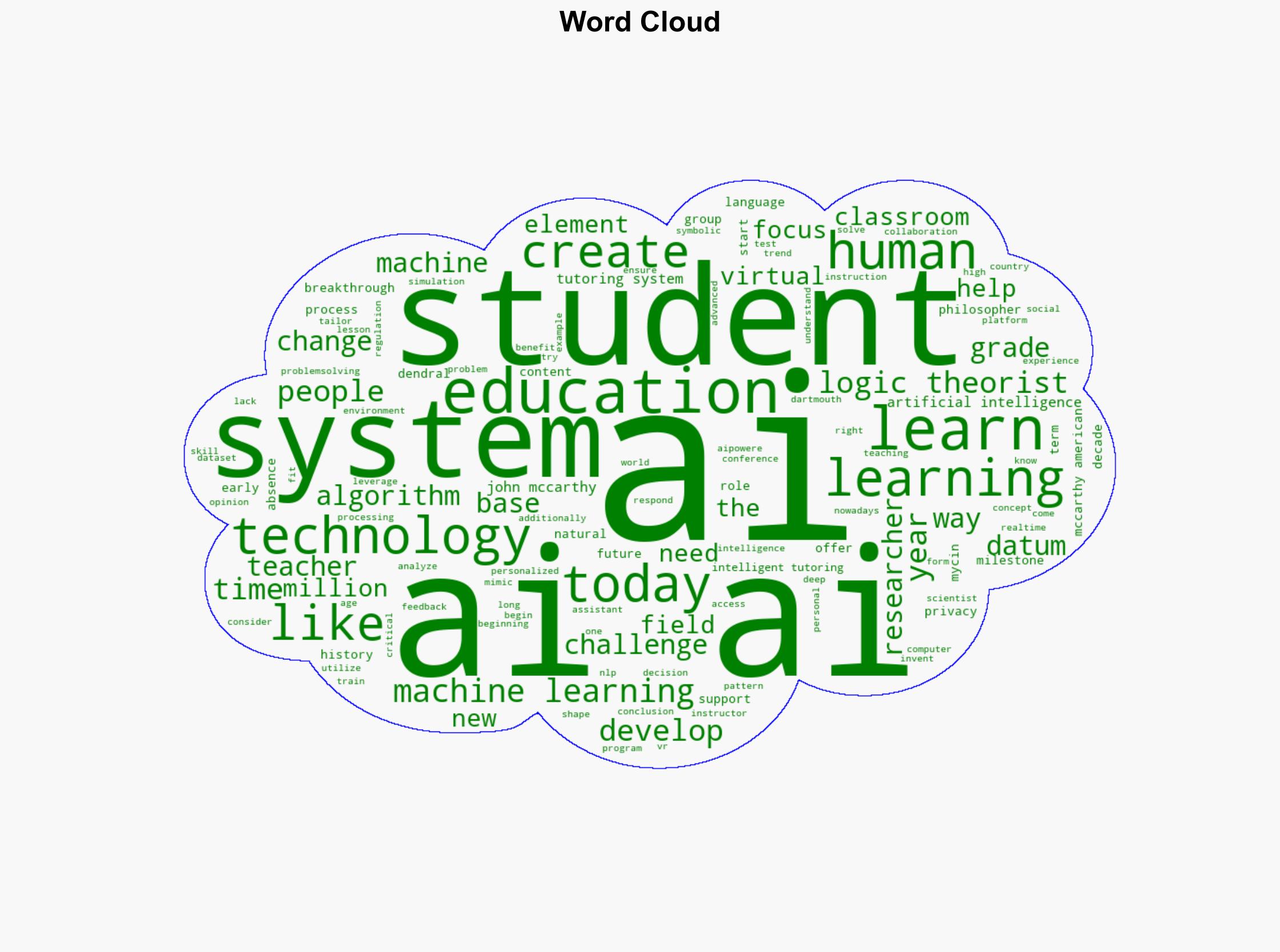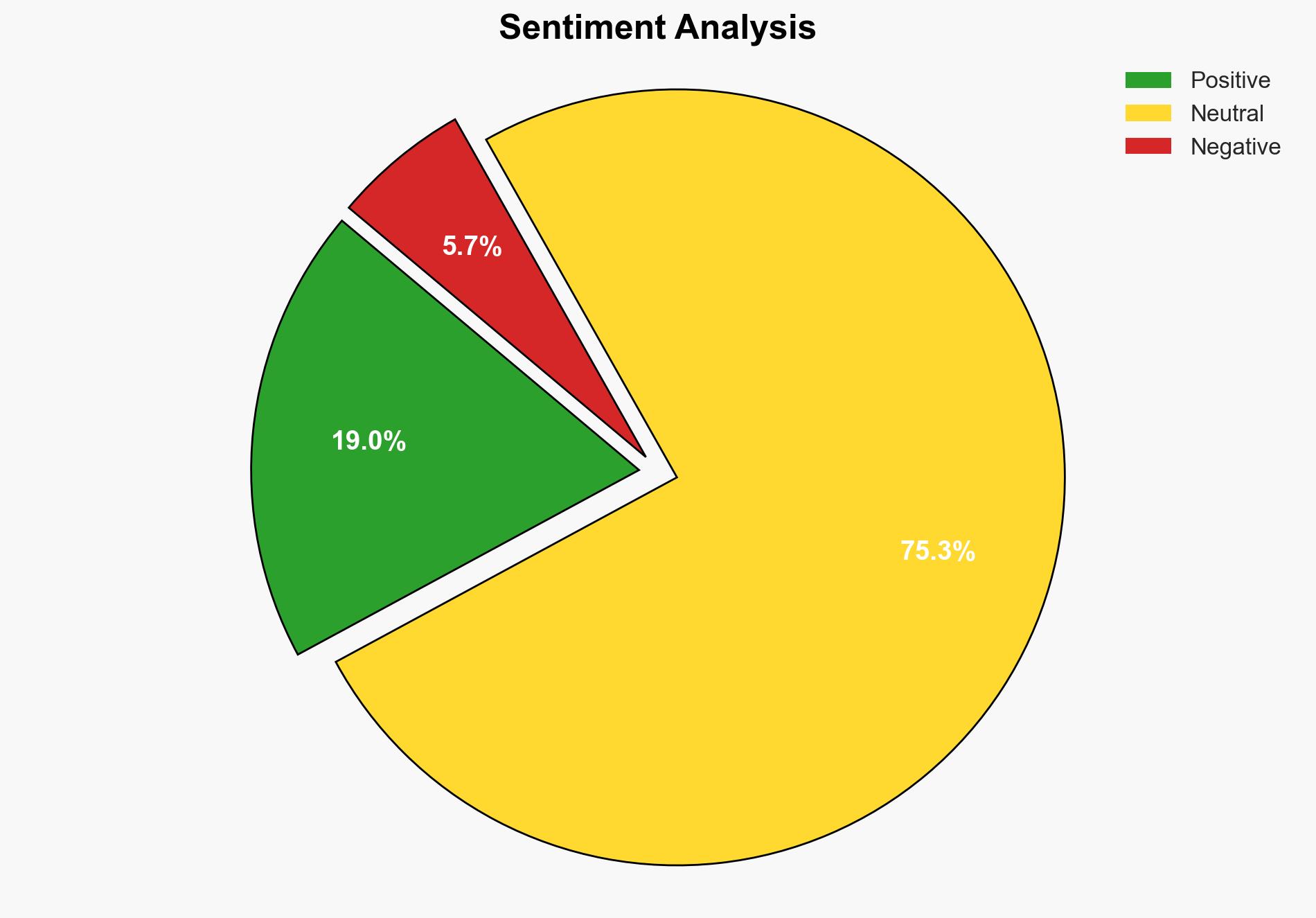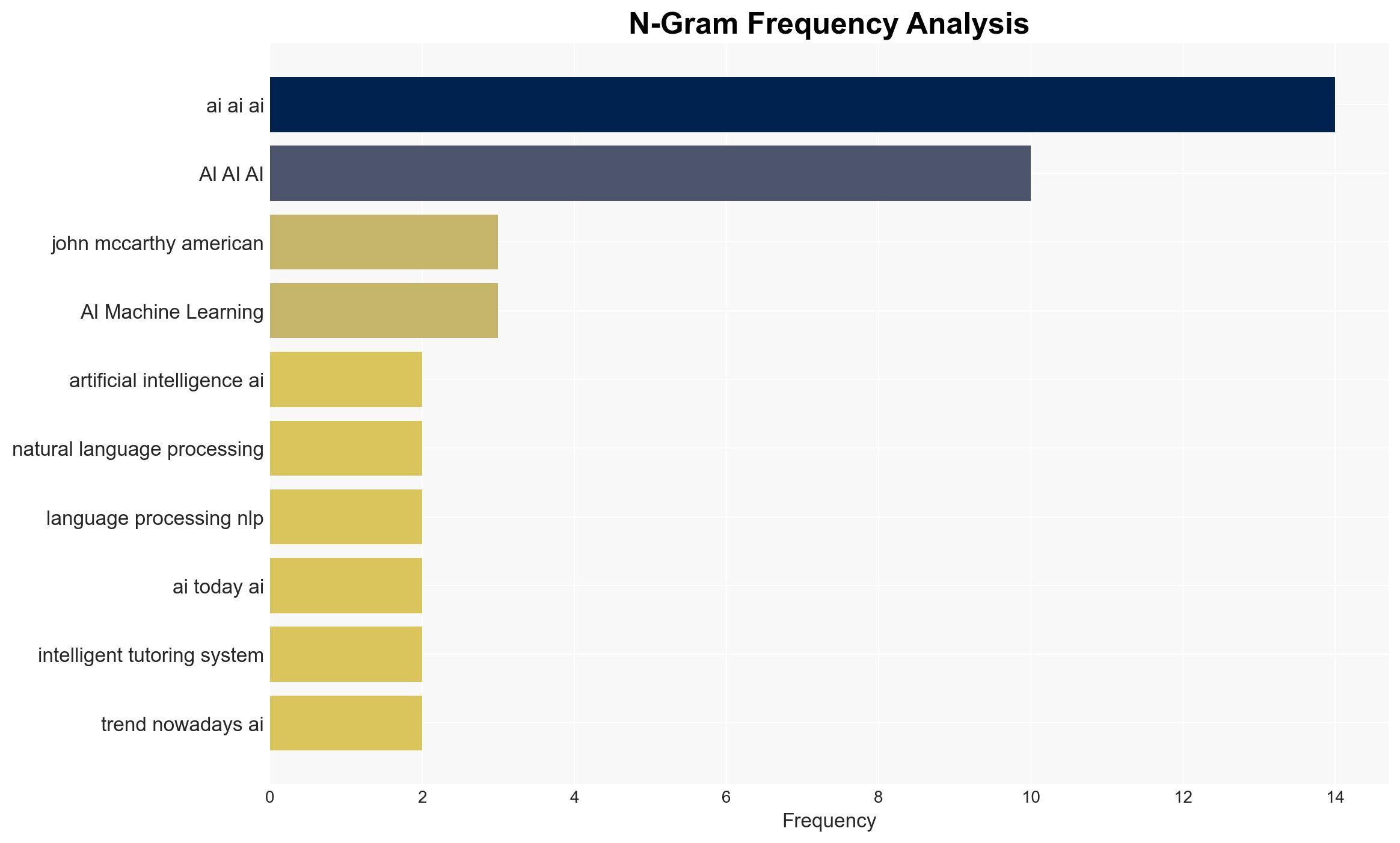A Simplified Overview Of The Evolution Of AI And Its Role In Education
Published on: 2025-11-22
AI-powered OSINT brief from verified open sources. Automated NLP signal extraction with human verification. See our Methodology and Why WorldWideWatchers.
Intelligence Report:
1. BLUF (Bottom Line Up Front)
The integration of AI in education is poised to significantly transform learning environments by offering personalized and adaptive learning experiences. The most supported hypothesis is that AI will enhance educational outcomes by providing tailored educational tools and resources. However, this transition is contingent upon overcoming technical, financial, and societal barriers. Confidence Level: Moderate.
2. Competing Hypotheses
Hypothesis 1: AI will revolutionize education by providing personalized learning experiences, improving educational outcomes, and increasing accessibility.
Hypothesis 2: The integration of AI in education will face significant challenges, including high costs, resistance to change, and ethical concerns, resulting in limited impact.
Hypothesis 1 is more likely due to ongoing advancements in AI technologies and increasing adoption in various sectors, including education. However, Hypothesis 2 remains plausible due to existing barriers and societal concerns.
3. Key Assumptions and Red Flags
Assumptions: AI technologies will continue to advance and become more cost-effective; educational institutions will be willing to adopt new technologies.
Red Flags: High initial costs and ongoing maintenance expenses; potential resistance from educators and institutions; ethical concerns regarding data privacy and AI decision-making.
4. Implications and Strategic Risks
Implications: Successful integration of AI could lead to improved educational outcomes and greater accessibility, particularly in underserved areas.
Strategic Risks: Potential for increased inequality if access to AI-driven education is uneven; cybersecurity threats related to data privacy; potential job displacement for educators.
5. Recommendations and Outlook
- Actionable Steps: Invest in AI research and development focused on education; develop policies to address ethical concerns and data privacy; provide training for educators on AI tools.
- Best Scenario: AI integration leads to widespread educational improvements and accessibility.
- Worst Scenario: High costs and resistance prevent effective AI adoption, exacerbating educational inequalities.
- Most-likely Scenario: Gradual adoption of AI in education, with mixed results depending on region and institution.
6. Key Individuals and Entities
John McCarthy – Key figure in the development of AI; Dartmouth Conference – Crucial event in AI history.
7. Thematic Tags
Cybersecurity, Education Technology, Artificial Intelligence, Data Privacy, Educational Policy
Structured Analytic Techniques Applied
- Adversarial Threat Simulation: Model and simulate actions of cyber adversaries to anticipate vulnerabilities and improve resilience.
- Indicators Development: Detect and monitor behavioral or technical anomalies across systems for early threat detection.
- Bayesian Scenario Modeling: Quantify uncertainty and predict cyberattack pathways using probabilistic inference.
- Cognitive Bias Stress Test: Structured challenge to expose and correct biases.
Explore more:
Cybersecurity Briefs ·
Daily Summary ·
Support us





